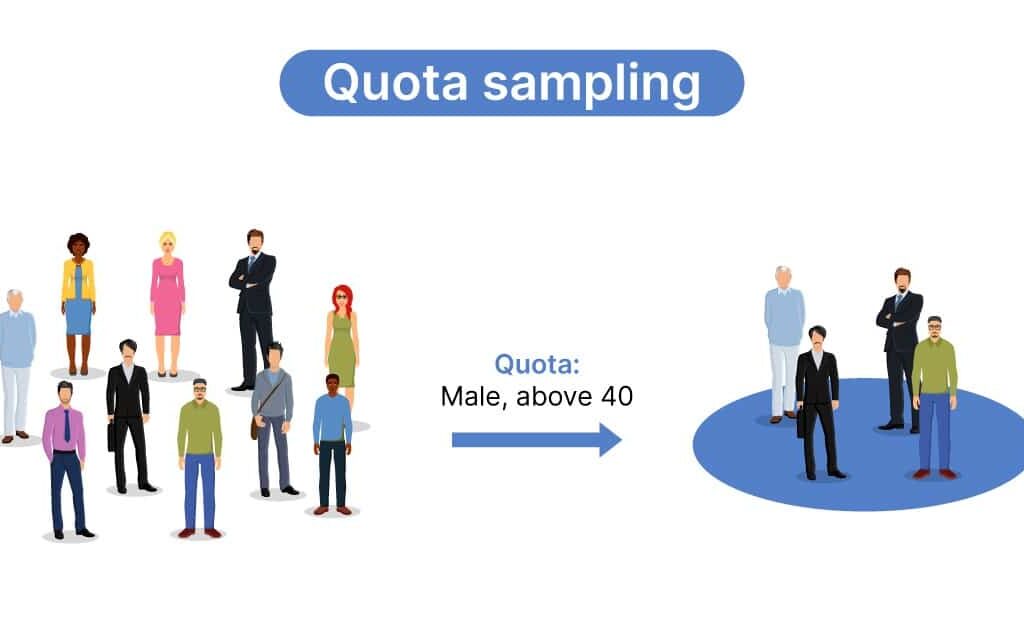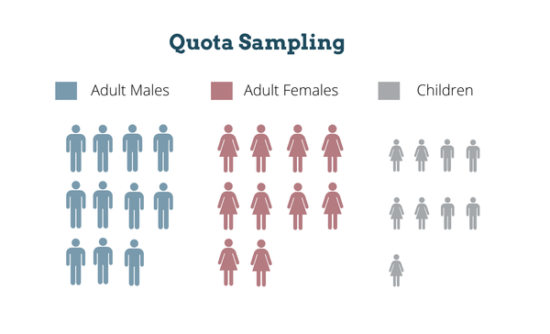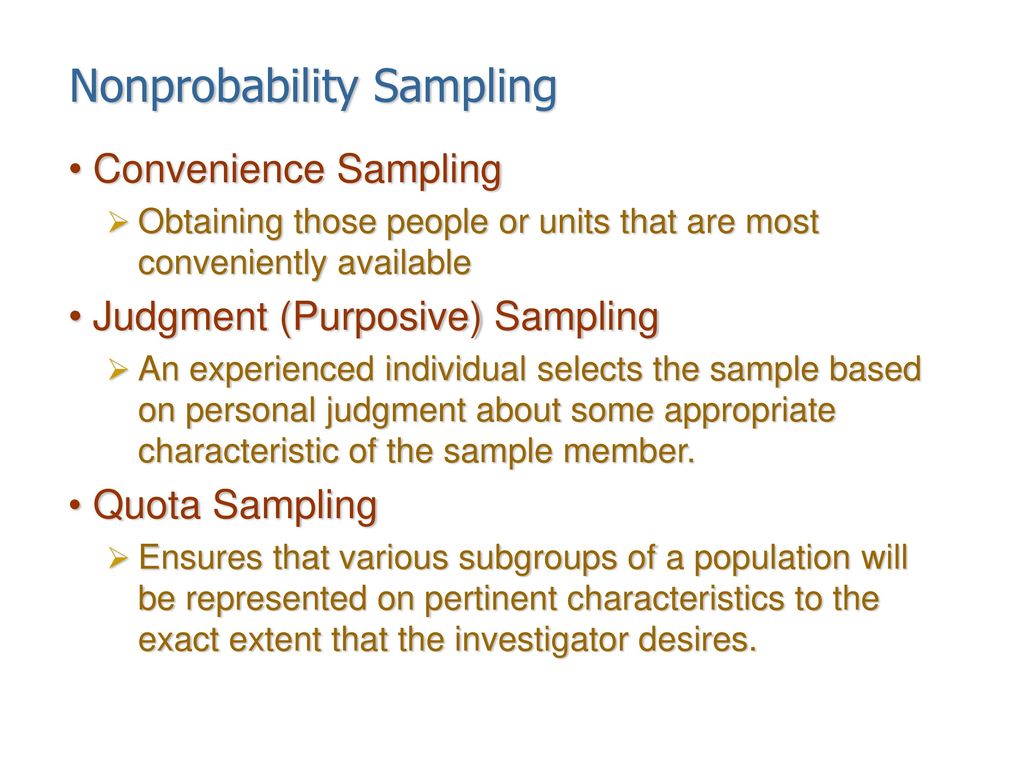Describe the Difference Between Convenience Sampling and Quota Sampling
Convenience sampling is based on the availability of participants or volunteers and quota sampling is based on selecting participants from specific groups to make sure each group is. The quota sampling is used because it allows the researchers to select a subgroup as a sample that is of great interest to study.

All You Need To Know About Quota Sampling Voxco
In quota sampling the assembled sample has the same proportions of individuals as the entire population with respect to known characteristics traits or focused phenomenon.

. In quota the quota of cases w in a stratum may be filled in whatever way the investigator chooses the probability isnt equal because youre using convenience. It is used when the decision of the researcher is final for choosing the samples. The main difference between stratifiedsampling and quota sampling is that stratified sampling would select the students using a probability samplingmethod such as simple randomsampling or systematic sampling.
Quota sampling is a sampling method that includes only certain groups to ensure a fair or appropriate representations of those groups this helps avoid oversampling. Uncontrolled quota sampling resembles convenience sampling method in a way that researcher is free to choose sample group members. Although both group participants by an important characteristic stratified sampling relies on random selection within each group while quota sampling relies on convenience sampling within each group.
In terms of sampling mechanism ie. Both methods tend to be quicker and more cost-effective ways of obtaining a sample from a population compared to a simple random sample. Describe Convenience accidental haphazard sampling.
Convenience sampling is based on the availability of participants or volunteers and quota sampling is based on selecting participants from specific groups to make sure each group is properly represented for the study Compare and contrast. Here let us discuss all these types of non-probability sampling in detail. Cluster sampling divides a population into groups then includes all members of some randomly chosen groups.
Non-probability sampling is a category of sampling used in qualitative research. - expert sampling - proportional and non-proportional quota sampling - diversity sampling Heterogeneity - snowball sampling. Because of the involvement of a quota for sample creation this sampling process is quick and straightforward.
The results are not typically used to create generalizations about a particular group. Quota sampling can be divided into two groups- Controlled quota sampling involves introduction of certain restrictions in order to limit researchers choice of samples. By using quota sampling and appropriate research questions interpreting information and responses to the survey is a much convenient process for a researcher.
The main difference between stratified sampling and quota sampling is that stratified sampling would select the students using a probability sampling method such as simple random sampling or systematic. Non-probability Sampling methods are further classified into different types such as convenience sampling consecutive sampling quota sampling judgmental sampling snowball sampling. A simple random sample is then chosen independently from each group.
To understand purposive sampling its important to distinguish it from the other form of qualitative sampling known as convenience sampling. There is ur answer. Inquota sampling no such technique is used.
This way the probability of each element in a given group. Doesnt involve use of randomization can be used to disprove a hypothesis. Describe the difference between convenience sampling and quota sampling.
What is the difference between non-probability sampling and probability sampling. Unclear however is why they would lead to different results. Convenience sampling is based on the availability of participants or volunteers and quota sampling is based on selecting participants from specific groups to make sure each group is properly represented.
Shawn asked a good question in class yesterday about the differences between stratified sampling and quota sampling. Both convenience and purposive sampling are forms of nonprobability sampling - versus probability random sampling as is typically applied for quantitative research. Stratified sampling divides a population into groups then includes some members of all of the groups.
Stratified sampling includes sub-dividing the sample into mutually exclusive and exhaustive groups. Convenience sampling would involve selecting whomever is. Convenience sampling is a sampling method in which participation.
In quota sampling the judgment of sampling is done on the basis of convenience or a fixed quota. A non-probability sampling includes non-random deliberate processes for selecting participants for a study. The actual process by which cases are chosen from the population it is clear that these two samples are different.
October 16 2020. Stratified sampling is a probability sampling method while quota sampling is a non-probability sampling method. The sampling frame is the list of each member of the sample False.
Quota sampling is a sampling method that includes only certain groups to ensure a fair or appropriate representations of those groups this helps avoid oversampling. Convenience sampling is a sampling method in which participation.

Chapter 12 Sampling Designs And Sampling Procedures Ppt Download

Quota Sampling In Market Research Practices Ovationmr

Difference Between Quota Sampling And Convenience Sampling Methods Of Sampling Class 11 Economics Youtube
0 Response to "Describe the Difference Between Convenience Sampling and Quota Sampling"
Post a Comment